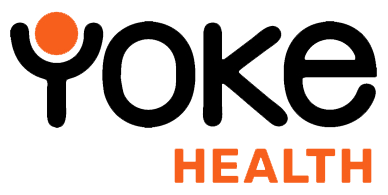Is your healthcare website a barrier for people with disabilities?
Posted in Digital Healthcare Insights
Ed Johnson - Back-End Developer
You’d probably be outraged by a business that refused to allow entry to a person with a disability – if they declined to provide an alternative to stairs or make a doorway wide enough for a wheelchair. But what about the online world, as opposed to the real one?
46.6% of those with a disability say the internet is their first choice when they need health information.
It probably comes as no surprise that those with disabilities are more likely to seek health information online than those without a disability. Yet despite this, those with disabilities are often faced with inaccessible websites.
70% of websites flat-out break the law when it comes to providing EVERYONE access to their content
In the study where the above stat was uncovered, a whole host of other problems emerged – ranging from illegible text to websites that simply refused to work with a screen reader (used by those with visual impairment).
And the most depressing thing about it?
The online world presents a rich opportunity to improve healthcare outcomes for those with disabilities. It’s also a legal requirement (in much the same way as for physical premises) for websites to be accessible, but ONLY for public sector bodies. Here’s what the equality act (2010), Section 29(1) has to say on the matter:
“A person … concerned with the provision of a service to the public or a section of the public (for payment or not) must not discriminate against a person requiring the service by not providing the person with the service”.
Whether a website is that of a public body’s or a private business, technology could and should be empowering people from the comfort of their own home. We must do better.
Not only do you risk a bap rep if you fail to make your digital platforms accessible, you could also be allowing business to simply pass you by. And when we say business, we mean 12 million people with the sizeable spending power of £120 billion.
Thirteen fast-fire accessibility problems to tackle TODAY
- Image should have valid ALT description (this helps those with visual impairments in understanding the images on your website). However…
- Don’t use long-winded ALT text – make it short and snappy.
- Multimedia (such as video and podcasts) should have equivalent audio descriptions – for the same reasons as images have ALT text.
- Allow users to skip repetitive links (your menu, for example); this means that those using a screen reader won’t have to listen to a list of menu links each time they move to a new page.
- Make sure your forms have labels that tell the user what each field requires in terms of information, and…
- Never insert text into empty form fields for the sake of it.
- Colour should not be essential to understanding your content (one example where this could be a problem is with colour blindness – those with this condition will struggle to distinguish between blue and yellow or red and green.
- No JavaScript links should be used – keep your links descriptive, and simple.
- Create content that is clear – download a screen reader to listen to how your content sounds before going live.
- Try to avoid acronyms and abbreviations – for example, the acronym for Disability Living Allowance is pronounced “D L A” by people, but some screen readers will say “dla” (like dlah”) instead.
- Don’t change the tab order – the user should be able to move from one link to the next in linear fashion by using the tab button.
- Don’t implement features that lack an accessible alternative (such as live chat).
- Don’t worry too much about accessibility statements – the proof is in the pudding. Focus instead on following all of the above.
These pointers are the bare minimum – they’re the basics that every website should follow. Beyond which should be user-focused design and UX logic. But that’s a whole new topic for another day. For now, let’s start by providing those with disabilities the basic access that they deserve.

Monthly Archives
- July 2023
- July 2020
- June 2020
- May 2020
- April 2020
- March 2020
- February 2020
- January 2020
- December 2019
- October 2019
- September 2019
- August 2019
- July 2019

